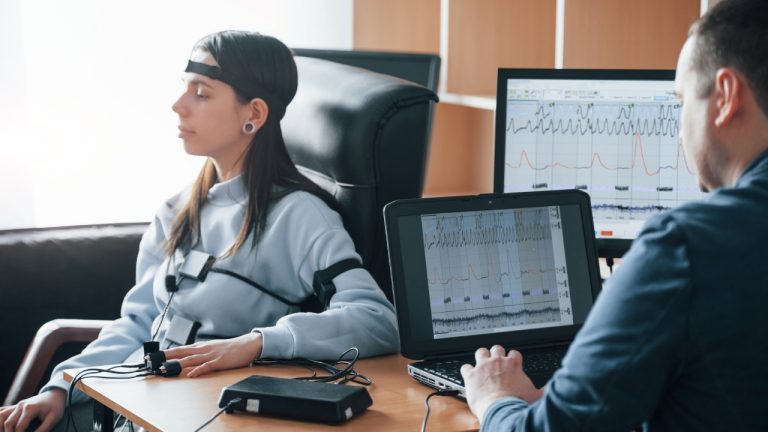Understanding Mental Health Providers
When seeking mental health services, it’s essential to understand the roles and services offered by different mental health providers. These professionals play a vital role in supporting individuals dealing with anxiety, stress, and other mental health concerns.
Roles and Services
Mental health providers encompass a diverse range of professionals, including psychiatrists, psychologists, psychiatric mental health nurses, physician assistants, licensed clinical social workers, licensed professional counselors, and marriage and family therapists, each offering unique services tailored to individual needs (Mayo Clinic). Some key roles and services provided by mental health providers include:
- Psychiatrists: Medical doctors specializing in mental health disorders, capable of diagnosing conditions, prescribing medications, and providing therapy.
- Psychologists: Trained professionals offering therapy and counseling services to help individuals manage mental health challenges.
- Psychiatric Mental Health Nurses: Nurses with specialized training in mental health care, assisting in treatment plans and offering support.
- Physician Assistants: Work alongside psychiatrists to provide comprehensive care, including medication management and therapy.
- Licensed Clinical Social Workers: Offer counseling and support services, focusing on mental and emotional well-being within a social context.
- Licensed Professional Counselors: Provide therapy and counseling services to address various mental health concerns.
- Marriage and Family Therapists: Specialize in helping couples and families improve relationships and cope with mental health issues.
Understanding the roles and services of these professionals can help individuals choose the right provider based on their specific needs and preferences.
Education and Training
Mental health providers undergo extensive education and training to practice in their respective fields. Their qualifications and expertise play a crucial role in delivering effective and compassionate care to individuals seeking help for anxiety and other mental health conditions.
Behavioral health professionals, including counselors, social workers, neurologists, psychiatrists, and physicians, possess a wide range of expertise in treating behavioral health issues. The education and training of mental health providers typically include:
- Advanced Degrees: Many mental health providers hold advanced degrees in psychology, counseling, social work, or psychiatry.
- Clinical Experience: Through internships, residencies, and clinical practice, providers gain hands-on experience in assessing and treating mental health disorders.
- Continuing Education: Mental health providers engage in ongoing training to stay current with advancements in the field and best practices for treating anxiety and other mental health conditions.
By understanding the education and training background of mental health providers, individuals can make informed decisions when seeking treatment for anxiety, stress, and other mental health challenges. It is essential to collaborate with a provider who can offer the expertise and support needed to promote emotional well-being and achieve stress-free living.
Benefits of Relaxation Techniques
When it comes to managing stress and promoting wellness, incorporating relaxation techniques into your daily routine can have profound benefits. These techniques not only assist in reducing stress but also aid in coping with various health issues, providing a path to a more serene and balanced life.
Stress Reduction
Relaxation techniques play a pivotal role in alleviating stress and enhancing overall well-being. By engaging in practices such as deep breathing exercises, progressive muscle relaxation, and visualization, you can effectively lower stress levels and cultivate a sense of calm. These methods can be particularly beneficial for individuals facing everyday stressors and those dealing with chronic stress related to health conditions like heart disease and chronic pain.
Coping with Health Issues
In addition to stress reduction, relaxation techniques offer valuable support in managing health issues. Whether you are navigating a chronic illness or experiencing pain, learning and incorporating these practices can significantly improve your quality of life. Techniques such as guided imagery, mindfulness meditation, and autogenic relaxation can be powerful tools for coping with the physical and emotional challenges that accompany various health conditions.
By embracing relaxation techniques as part of your self-care routine, you empower yourself to actively address stressors and health concerns, paving the way for a more balanced and resilient lifestyle. Exploring different methods and finding the ones that resonate with you can lead to enhanced well-being and a greater sense of tranquility in your daily life.
Exploring Relaxation Techniques
In the realm of stress management and anxiety treatment, exploring various relaxation techniques can offer a pathway to inner calm and enhance overall well-being. Among the plethora of techniques available, three common practices include autogenic relaxation, progressive muscle relaxation, and visualization practices.
Autogenic Relaxation
Autogenic relaxation focuses on inducing a state of relaxation through self-suggestions of heaviness, warmth, and calmness. This technique involves visual imagery and body awareness to help individuals achieve a deep sense of relaxation and reduce stress levels. It provides a moment of respite from daily pressures and cultivates a tranquil state of mind.
Progressive Muscle Relaxation
Progressive muscle relaxation is a method that involves systematically tensing and then relaxing different muscle groups in the body. By sequentially tensing and releasing muscle tension, individuals can become more aware of the physical sensations associated with stress and learn to release muscular tension, promoting a sense of physical and mental relaxation.
Visualization Practices
Visualization practices harness the power of mental imagery to evoke a sense of peace and tranquility. By mentally visualizing serene landscapes or positive scenarios, individuals can guide their minds to a peaceful place or situation, effectively reducing stress and anxiety levels. Visualization practices offer a creative outlet for relaxation and provide a mental escape from daily stressors.
These relaxation techniques, including autogenic relaxation, progressive muscle relaxation, and visualization practices, play a pivotal role in stress reduction and overall well-being. The ability to unwind and center oneself through these practices can lead to improved stress management and a more peaceful state of mind. For individuals seeking effective methods to cope with stress and anxiety, exploring these relaxation techniques can pave the way to a calmer and more balanced lifestyle.
The Relaxation Response
In the realm of mental health and substance abuse treatment, understanding the relaxation response is key to fostering inner peace and well-being. Developed by Dr. Herbert Benson in the 1970s at Harvard Medical School, the relaxation response serves as a powerful tool to counteract the effects of stress and anxiety. By harnessing this technique, individuals can cultivate a state of deep relaxation that promotes tranquility and aids in stress reduction (Harvard Health Publishing).
Dr. Herbert Benson’s Contribution
Dr. Herbert Benson’s groundbreaking work in uncovering the relaxation response has had a profound impact on mental health and wellness practices. By highlighting the importance of relaxation techniques in combating stress, Dr. Benson has provided individuals with a valuable path to alleviate anxiety and promote emotional balance.
Creating Inner Calm
Through the utilization of the relaxation response, individuals can tap into a reservoir of inner calm and serenity. By engaging in relaxation practices such as deep breathing, meditation, and progressive muscle relaxation, individuals can counteract the physiological effects of stress and foster a sense of peace and tranquility within themselves. This inner calm serves as a cornerstone for enhancing emotional well-being and promoting a stress-free living environment.
Effective Relaxation Techniques
When it comes to managing anxiety and promoting stress-free living, incorporating effective relaxation techniques is essential. Among the various methods available, three techniques stand out for their proven efficacy in evoking the relaxation response and reducing stress levels: breath focus, body scan, and mindfulness meditation.
Breath Focus
Breath focus is a simple yet powerful relaxation technique that involves paying close attention to your breathing. By focusing on the rhythm of your breath – the inhales and exhales – you can calm your mind and body, promoting a sense of tranquility and peace. This technique is particularly beneficial for individuals experiencing heightened anxiety or racing thoughts.
To practice breath focus, find a quiet and comfortable spot to sit or lie down. Close your eyes and take slow, deep breaths, allowing your belly to rise and fall with each inhalation and exhalation. Concentrate on the sensation of breathing, letting go of any distractions or worries. By centering your attention on the present moment and the act of breathing, you can induce a state of relaxation and mental clarity.
Body Scan
The body scan technique involves systematically focusing on each part of your body, from head to toe, to identify and release tension. This practice helps increase body awareness, reduce physical discomfort, and promote overall relaxation. By bringing attention to different areas of the body, you can identify areas of stress and consciously release that tension.
To perform a body scan, lie down in a comfortable position and close your eyes. Start by focusing on your toes, gradually moving upward through your feet, legs, torso, arms, and head. As you scan each body part, pay attention to any sensations or feelings of tightness or relaxation. Take deep breaths and intentionally relax each muscle group as you progress through the scan. This technique can help you release pent-up tension and achieve a state of deep relaxation.
Mindfulness Meditation
Mindfulness meditation is a practice that involves sitting comfortably, focusing on breathing, and bringing your attention to the present moment. Mindfulness meditation has been proven beneficial for individuals struggling with anxiety, depression, and chronic pain. By cultivating mindfulness, you can observe your thoughts and emotions without judgment, enhancing your mental clarity and emotional well-being.
To engage in mindfulness meditation, find a quiet space and sit in a comfortable position. Close your eyes and start by focusing on your breath – the sensation of air entering and leaving your body. As thoughts arise, acknowledge them without getting caught up in them, gently guiding your focus back to your breath. By practicing mindfulness regularly, you can develop greater self-awareness, reduce anxiety, and cultivate a sense of inner peace.
Incorporating these effective relaxation techniques into your daily routine can significantly contribute to managing anxiety, reducing stress, and promoting overall well-being. Whether you choose to practice breath focus, a body scan, or mindfulness meditation, dedicating time to relax and center yourself can lead to a more peaceful and harmonious life.
Seeking Mental Health Services
When looking for mental health services to address anxiety and stress, individuals may come across a variety of options, including traditional and nontraditional services. Understanding the differences between these approaches can help individuals make informed decisions about their mental health care.
Traditional vs. Nontraditional Services
Recent studies have shown that while both traditional and nontraditional mental health services are widely used, there is a higher preference for traditional services among individuals seeking treatment for mental health conditions (Journal of Behavioral Health Services & Research). Traditional services typically refer to face-to-face interactions with mental health professionals, such as therapists, psychologists, or psychiatrists. These services are often foundational in providing comprehensive care and evidence-based treatment for various mental health conditions.
On the other hand, nontraditional services encompass a wide range of options, including mobile apps, online communities, peer counseling, and self-help books. While nontraditional services are increasingly popular, especially among young adults and adolescents, traditional services remain the preferred choice for many individuals (Journal of Behavioral Health Services & Research). Integrating nontraditional services with traditional approaches can offer a well-rounded and effective support system for mental health treatment.
Preferences and Willingness
Participants in studies have demonstrated a high level of willingness to explore nontraditional mental health services, indicating openness to innovative approaches to mental health care. However, when it comes to choosing a first-choice treatment, traditional services are often favored, highlighting the value placed on established therapeutic methods.
Perceived accessibility and reliability of mental health services play a significant role in shaping individuals’ preferences and willingness to engage with different treatment modalities . Factors such as ease of access, quality of information, and trust in the service provider influence decision-making regarding mental health care options.
As the demand for mental health services continues to rise, particularly among young adults, there is a growing need for cost-effective and scalable approaches to address the diverse mental health needs of the population (Journal of Behavioral Health Services & Research). By understanding the benefits and considerations of both traditional and nontraditional mental health services, individuals can make proactive choices to support their emotional well-being and seek the services that best align with their preferences and needs.







